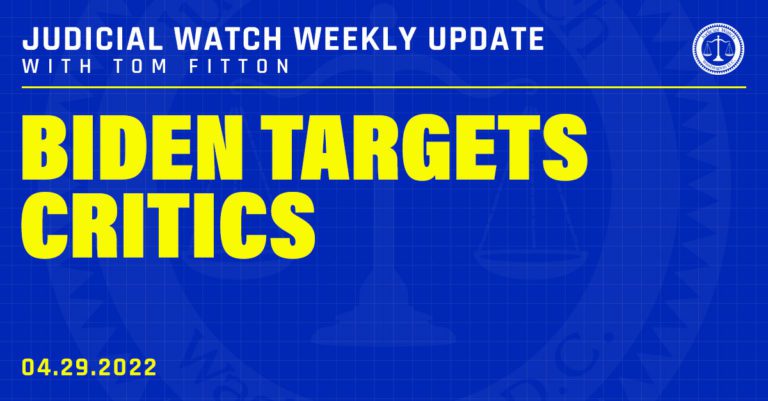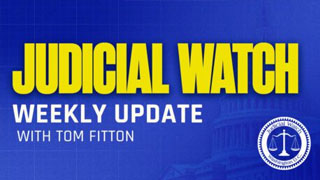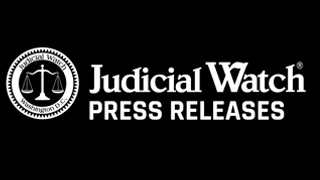

Biden Targets Critics


Judicial Watch Sues DOJ, and HHS for Communications about Project Veritas
Safety Lapses at Biosafety Labs Handling Dangerous Agents and Toxins
Biden DOJ Says Shorter Sentences Will Promote “Equity”
Judicial Watch Demands Answers in Cold Case Murder of NYPD Officer
Judicial Watch Sues DOJ, and HHS for Communications about Project Veritas
From midnight raids to legal maneuvering, the government has been attacking Project Veritas for years. We need to know the details of any Biden administration discussions targeting the journalists at Project Veritas.
We filed three FOIA lawsuits against Departments of Justice (DOJ) and Health and Human Services (HHS) for communications about Project Veritas with Pfizer, the New York Times and other outside groups (Judicial Watch v Department of Justice (No. 1:22-cv-01035)) (Judicial Watch v Department of Health and Human Services (No. 1:22-cv-01033)) (Judicial Watch v Department of Justice (No. 1:22-cv-01034)).
The lawsuit (No. 1:22-cv-01035) about the FBI’s communications with Pfizer about Project Veritas was filed after the DOJ failed to respond to a December 21, 2021, FOIA request for:
- All records of communications between officials in the FBI, including officials in the offices of the FBI New York Field Office on the one hand, and employees and representatives of Pfizer Inc. on the other hand, regarding Project Veritas founder James O’Keefe and/or Project Veritas.
The lawsuit (No. 1:22-cv-01033) regarding Phoenix Indian Medical Center communications about Project Veritas was filed after HHS failed to respond to an October 18, 2021, FOIA request for:
- All records of communications between PIMC officials and/or employees regarding, concerning, Jodi O’Malley, James O’Keefe and/or Project Veritas.
The lawsuit (No. 1:22-cv-01034) about the FBI’s communications with the New York Times about Project Veritas was filed after the DOJ failed to respond to a November 10, 2021, FOIA request for:
- All records of communications between officials in the FBI, including officials in the offices of the FBI Director, FBI Deputy Director, Office of General Counsel, Office of Public Affairs, and/or the FBI New York Field Office on the one hand, and employees, contractors, and representatives of The New York Times on the other hand, regarding the FBI search warrants and raid on the residence of Project Veritas journalist Spencer Meads on November 4, 2021.
- All records of communications between officials in the FBI, including officials in the offices of the FBI Director, FBI Deputy Director, Office of General Counsel, Office of Public Affairs, and/or the FBI New York Field Office on the one hand, and employees, contractors, and representatives of The New York Times on the other hand, regarding the FBI search warrants and raid on the residence of Project Veritas founder James O’Keefe on November 6, 2021.
In January 2022, we announced that the FBI told us in a response to a FOIA request that it has communications from Pfizer in an investigative file targeting Project Veritas. In October 2021, Project Veritas, a nonprofit investigative journalism organization, published two viral stories [here and here] about the Pfizer COVID vaccine.
Safety Lapses at Biosafety Labs Handling Dangerous Agents and Toxins
The federal government monitors activity at 244 secure, high-containment biosafety laboratories on U.S. soil that handle dangerous viruses and bacteria.
We’ve discovered several mishaps, human errors, animal escapes, improper and defective personal protective equipment incidents, facility equipment failures and containment failures at these labs.
We learned this in 25 pages of redacted records and communications from the Federal Select Agent Program (FSAP). The records were produced through our January 25, 2022, Freedom of Information Act (FOIA) request to the Federal Select Agent Program for:
Any and all records maintained by the U.S. Department of Agriculture including memoranda, draft memoranda, reports, email communications, email chains, investigative reports and other communications or data concerning accidents, investigations, incidents, spills, loss, theft, near miss hazardous events, and enforcement actions regarding any Select Agent or Toxin at Biosafety Level (BSL) 2, BSL 3 or BSL 4 laboratories.
The Federal Select Agent Program “is jointly comprised of the Centers for Disease Control and Prevention/Division of Select Agents and Toxins and the Animal and Plant Health Inspection Service/Division of Agricultural Select Agents and Toxins. The Federal Select Agent Program oversees the possession, use and transfer of biological select agents and toxins, which have the potential to pose a severe threat to public, animal or plant health or to animal or plant products.”
Here are some of the details of what we learned.
On March 11, 2021, the Federal Select Agent Program sent a letter to a recipient whose name is redacted titled “Suspension of Registration.” The letter advises the entity that their certificate of registration “to possess, use, and transfer select agents and toxins is suspended” due to “failure to comply with the regulatory requirements.” The letter further states:
[T]he APHIS/CDC [Animal and Plant Health Inspection] … reports and notification of inventory discrepancies made in January 2019, October – November 2020, and most recently in January 2021, indicate systemic noncompliance with inventory record keeping and effective training requirements that would prevent these repeated occurrences. Despite written assurances by the Responsible Official (RO) after each aforementioned incident that staff had been retrained on inventory practices and reminded of [the importance] of proper communication [redacted] continued to report inventory discrepancies. Specifically, [redacted] systemic noncompliance with the ed by the following:
The specifics of each of the incidents are redacted. The letter orders the entity to cease all activities with select agents and toxins except a “vial-by-vial inventory.”
Corrective actions were required to be completed by August 11, 2021, or the certificate of registration could be revoked, resulting in “all select agents and toxins a [redacted] will need to be transferred to a registered facility or destroyed.”
On March 11, 2020, the Agriculture Select Agent Services (AgSAS) sends a letter to a recipient whose name is redacted titled “Corrective Action Plan (CAP).” The letter indicates the “USDA-APHIS [Animal and Plant Health Inspection] Investigative Enforcement Services (IES)” sends a letter on February 27, 2020, “in which [redacted] agreed to meet with the CAP requirements outlined in [an] IES letter.”
The March letter provides notice that failure to follow the plan of action could result in the “suspension or revocation of [redacted] certificate of registration for the possession, use and transfer of select agents and toxins….”
On February 19, 2021, Animal and Plant Health Inspection Services, sends a letter to a recipient whose name is redacted that includes the subject line “Suspension of Registration.” The letter advises the entity that their certificate of registration to possess, use, and transfer select agents and toxins is suspended due to failure to comply with regulatory requirements related to registration and restricted experiments; responsible official, and theft, loss or release; security; biosafety-general; incident response; training; and records keeping observed during a January 19-22, 2021, compliance inspection.
On July 19, 2019, then-CDC Director Dr. Robert R. Redfield sends a letter to then-Secretary of the U.S. Department of Health and Human Services (HHS) Alex M. Azar II titled: “Report to Congress on the Notifications of Theft, Loss, or Release of Select Agents and Toxins for Calendar Year 2018 – Decision:”
Between January 1, 2018, and December 31, 2018, the Select Agent Regulatory Programs at USDA and HHS received eight reports of BSAT [biological select agents and toxins] loss, 193 reports of BSAT release. and zero reports of a theft of a BSAT for calendar year (CY) 2018.
There were eight reports of a Joss (failure to account for BSAT), all from registered entities. [the Federal Select Agent Program] refers all reports of a BSAT loss to the Federal Bureau of Investigation (FBI). In CY 2018, the FBI determined that there was no criminal nexus for any of the eight reported losses. None of the reported losses resulted in a risk to public or agricultural health; and
There were 193 reports of a release (occupational exposure or release of BSJ\ T outside of the primary barriers of the biocontainment area). Of these reports, 66 reports were submitted by registered entities and 127 reports were from non-registered entities. None of the reported releases resulted in illnesses, deaths, or transmissions among workers or outside of a laboratory into the surrounding environment or community.
A chart within the report reveals the release of biological select agents and toxins were attributed to: one bite or scratch from an infected animal; 138 manipulations of select agents or toxins outside a biological safety cabinet or other equipment designed to protect from exposure; nine equipment or mechanical failures; 22 failures of personal protective equipment; 10 needle sticks or other exposures; nine spills of select agents; and four escaped animals.
A report dated July 6, 2020, is titled “Report to Congress: Notifications of Theft, Loss, or Release of Select Agents and Toxins for Calendar Year 2019.” A summary of the report reads:
During CY [calendar year 2019], [the Federal Select Agent Program] received 13 reports of losses, 219 reports of releases, and zero reports of thefts. None of the releases resulted in illnesses, deaths, or transmissions to/or among workers. nor was there a BSAT [biological select agents and toxins] transmission to the outside of a laboratory into the surrounding environment or community. The FBI investigated all 13 report of losses and, in all cases, determined there was no criminal nexus.
A chart within the report indicates the releases of select agents or toxins were attributed to the following: four bites or scratches from an infected animal; 140 manipulations of select agents or toxins outside a biological safety cabinet or other equipment designed to protect from exposure; one decontamination failure; 10 instances of deviation from standard laboratory operating procedures, such as not wearing the appropriate personal protective equipment or other safety violation; 16 equipment or mechanical failures; 21 failures of personal protective equipment; two failures in performing inactivation methods or removal methods for select agents; 13 needle sticks or other exposures; 10 spills of select agent; and two escaped animals.
A report from the USDA and HHS dated June 2021 is titled “Report to Congress: Notifications of Theft, Loss, or Release of Select Agents and Toxins for Calendar Year 2020.” A summary of the report indicates:
During [calendar year 2020], [the Federal Select Agent Program] received 13 reports of losses, 158 reports of releases, and no reports of theft of [biological select agents and toxins]. None of the reported releases resulted in death or transmission among workers nor transmission to the outside of a laboratory into the surrounding environment or community. FSAP [the Federal Select Agent Program] received one report from a non-registered entity of a release that resulted in an occupational illness in one worker that made a full recovery after receiving medical treatment. The FBI investigated all 13 reports of losses and, in all cases, determined there was no criminal nexus.
A chart within the report notes that the releases of select agent or toxin were attributed to the following: one bite or scratch from an infected animal; 92 manipulations of select agents or toxins outside a biological safety cabinet or other equipment designed to protect from exposure; one decontamination failure; five instances of deviation from standard laboratory operating procedures such, as not wearing the appropriate personal protective equipment or other safety violation; 19 equipment or mechanical failures; 13 failures of personal protective equipment; two failures in performing a validated inactivation or [biological select agents and toxins] removal method; 13 needle sticks or other exposures; 17 spills of select agent; and one escaped animal.
The report explains that one of the exposures resulted in an illness of one worker after exposure to Coxiella Burnetii. “The source of the infection was attributed to contact with infected animals in the performance of the worker’s duties. The worker received medical treatment and fully recovered from the illness. The entity notified all workers potentially exposed to the infected worker and found no evidence of disease transmission to others.”
These documents uncover a pattern of serious safety issues in biolabs here on U.S. soil. And, given these issues here at home, one can imagine the safety issues of labs the U.S. funds abroad.
For example, in June 2021, through a FOIA lawsuit, we uncovered a January 19, 2018, State Department cable from the US Embassy in Beijing about the Wuhan Institute of Virology with the subject “China Opens First Bio Safety Level 4 Laboratory” that includes a section titled “Unclear Guidelines on Virus Access and a Lack of Trained Talent Impede Research,” which notes in its introduction that “its current productivity is limited by a shortage of highly trained technicians and investigators required to safely operate a BSL-4 laboratory and a lack of clarity in related Chinese government policies and guidelines.”
Biden DOJ Says Shorter Sentences Will Promote ‘Equity’
While violent crime is rising, according to a top FBI official, the Biden Justice Department is busying itself by telling prosecutors to ignore maximum sentences in the interest of “fairness.” Our Corruption Chronicles blog looks into this dangerous madness.
The government agency charged with enforcing the law, ensuring public safety against foreign threats, and controlling crime has been quite busy formulating an official strategy to “advance equity for marginalized and underserved communities.” Made public this month, the policy is known as the Department of Justice Equity Action Plan and among its key initiatives is a reform in law enforcement practices that directs federal prosecutors to ignore maximum sentencing under the law. That will help “avoid unwarranted disparities, promote fair outcomes in sentencing, and seek justice in every case,” according to the new Biden administration plan. The DOJ brags that it issued prosecutors guidance requiring decisions about charging, plea agreements, and advocacy at sentencing to be based on “an individualized assessment of relevant facts, and not to reflexively rely on the maximum punishments allowable under law.” The DOJ assures that it will continue to pursue policies that promote equitable law enforcement practices.
The agency’s new Justice Equity Action Plan also creates a new Language Access Coordinator to report hate crimes in at least 10 languages, including six of the most frequently spoken Asian American and Pacific Islander (AAPI). An Anti-Hate Coordinator will oversee a new division and the Federal Bureau of Investigation (FBI), which operates under the DOJ, has been directed to designate hate crimes as “one of its highest-level national threat priorities.” The change will force the FBI to make hate crimes a focus for all of its 56 field offices, according to the new policy. The DOJ will also award over $21 million to help state and local agencies as well as community organizations “address an alarming rise in violent and property crimes committed on the basis of race, color, national origin, religion, sexual orientation, gender, gender identity, or disability.” A new Office for Access to Justice will help disenfranchised minorities navigate the justice system by offering language and cultural access, which the DOJ claims will ensure economic opportunity and fairness and pursue racial equity.
Under the new plan the DOJ will ensure that approximately $4 billion in grants awarded annually for justice-related programs is administered in a way that is inclusive of historically underserved and marginalized populations and implemented in a nondiscriminatory manner. Every year the agency doles the money out to community policing services, correctional and juvenile justice facilities, drug and mental health courts, services for crime victims and law enforcement wellness services. The grant programs “present a significant opportunity to further equity across a broad spectrum of services,” the new DOJ plan states, adding that grant recipients will be directed to take actions to promote greater equity in their communities and strengthen the agency’s enforcement of nondiscrimination mandates. The DOJ will also give more money to “entities serving communities that historically have had fewer opportunities to access and benefit from federal financial assistance.” This includes prioritizing funding for “culturally specific” organizations that provide “culturally relevant and linguistically specific services and resources to cultural groups” such as Latinos and blacks.
The new DOJ plan is part of the Biden administration’s sweeping effort to advance racial equity and support for underserved communities through the federal government. The costly initiative was launched back in January 2021 when the president issued an executive order claiming that “entrenched disparities” in laws, public policies, and private institutions have denied equal opportunity to individuals and communities and that the health and climate crises have exposed inequities while a “historic movement for justice has highlighted the unbearable human costs of systemic racism.” Therefore, the executive order states, the federal government should pursue a “comprehensive approach to advancing equity for all, including people of color and others who have been historically underserved, marginalized, and adversely affected by persistent poverty and inequality.” It further says that “by advancing equity across the Federal Government, we can create opportunities for the improvement of communities that have been historically underserved, which benefits everyone.”
Many key federal agencies have already implemented racial equity plans as per Biden’s order. The Department of Labor has dedicated $260 million to promote “equitable access” to government unemployment benefits by addressing disparities in the administration and delivery of money by race ethnicity and language proficiency. The Treasury Department named its first ever racial equity chief, a veteran La Raza official who spent a decade at the nation’s most influential open borders group. The Department of Defense (DOD) is using outrageous anti-bias materials that indoctrinate troops with anti-American and racially inflammatory training on diversity topics. The U. S. Department of Agriculture (USDA) created an equity commission to address longstanding inequities in agriculture. The nation’s medical research agency has a special minority health and health disparities division that recently issued a study declaring COVID-19 exacerbated preexisting resentment against racial/ethnic minorities and marginalized communities.
Judicial Watch Demands Answers in Cold Case Murder of NYPD Officer
Should we give up on justice even a half century after a murder was committed? No, we shouldn’t – and especially when it appears there is an official coverup still underway. Micah Morrison, our chief investigative reporter, reports the detailsin our Investigative Bulletin.
Fifty years ago this month, NYPD Patrolman Phillip Cardillo was gunned down inside Louis Farrakhan’s Nation of Islam Mosque in Harlem. No one ever did a day in jail for the crime. Is justice in the Cardillo case still possible?
The episode quickly became known as “the Harlem Mosque Incident” and was immediately engulfed in controversy, with rank-and-file cops ordered off the crime scene, a riot in Harlem, racial tensions, and a NYPD coverup. An alleged shooter was brought to trial in 1976, but a Judicial Watch investigation decades later revealed that key evidence was buried, never making it to investigators and prosecutors. The defendant was acquitted at a second trial, after the first trial resulted in a hung jury. At that point, a special prosecutor stepped in. He concluded in a 1980 report that there was “a concerted and orchestrated effort by members and former members of the Police Department to impede the investigation into the murder of Patrolman Philip Cardillo.”
That is, there was a coverup. By the NYPD. Of the murder of one of its own.
The case seemed to die. But one cop would not let it go. NYPD Detective Randy Jurgensen was the key investigator in the Cardillo affair. A legendary figure in New York law-enforcement, Jurgensen pursued the case through the two trials to a bitter end. In 2006, he published “Circle of Six,” a hard-hitting expose that accused New York’s political and police establishment of a “purposeful negligence of duty.” Soon after, then-NYPD Police Commissioner Ray Kelly ordered the NYPD’s Major Case Squad to take another look at the case.
Judicial Watch got involved in the new Cardillo investigation. We uncovered critical documents in the case—some never before seen, some lost for decades—including a White House tape of President Richard Nixon and FBI Director J. Edgar Hoover launching a secret program to hunt down cop killers; a secret NYPD report on the killing, known as “the Blue Book,” that was withheld from the department’s own investigators and Manhattan trial prosecutors; the long-lost special prosecutor’s report that raised questions about NYPD obstruction of justice; and FBI documents revealing a network of (unnamed) informants in the case and hinting at possible dirty tricks that may have drawn police to the Harlem mosque that fateful day in April. Read Judicial Watch’s investigative report here.
Seeking to learn more about the FBI’s role at the Harlem mosque, Judicial Watch filed a Freedom of Information Act request for “all records concerning the Nation of Islam Mosque #7 in Harlem… [including but not limited to] all informant, wiretap, electronic surveillance, and physical surveillance records.” The FBI denied it had any records related to the mosque. Judicial Watch was not satisfied with the FBI response and we filed a FOIA lawsuit seeking a more thorough search of records. But no new records were obtained from the FBI in the case.
The NYPD took an even more brazen approach when we sought case documents under New York’s Freedom of Information Law. The NYPD turned us down, claiming it did not have to provide the records because the Cardillo case was still “active and ongoing.”
Freedom of information laws have a standard exemption from disclosure of material that could impact an ongoing investigation. But at the time we filed the FOIL request, the Cardillo case was forty-eight years old. There was zero evidence that the case was active and ongoing. The NYPD’s refusal to provide any information appeared to be an extension of a decades-old coverup.
The coverup was first experienced by early investigators on the case, including Jurgensen, and first officially noted in the 1980 special prosecutor’s report. Judicial Watch decided not to take “no” for an answer. We sued the NYPD for documents related to the Cardillo investigation.
The case went all the way up to New York’s high court. But in the end, we lost. The commanding officer of the NYPD Major Case Squad supervising the case claimed under oath that the Cardillo murder “is an open investigation and remains actively pursued by the NYPD.”
The court noted that the NYPD also “submitted…information obtained from the detective leading an active, ongoing investigation into the homicide, which included receiving tips from informants and conducting interviews of potential witnesses.”
The court ruled that the NYPD “properly withheld the requested materials” based on NYPD statements that disclosure would interfere with an ongoing investigation. Read the full court decision here.
If the NYPD is to be believed, an active pursuit of Cardillo’s killer was underway. But it’s been more than two years since the New York court, accepting NYPD assurances, rejected Judicial Watch’s FOIL request. Is that “active investigation” into the Cardillo killing still “ongoing?” What has been accomplished?
Fifty years on, is justice for Phil Cardillo still possible? “Remember Cardillo” remains a rallying cry for generations of New York City cops—a searing reminder of the dangers of the job, of racial strife, and what happens when the brass throws a beat cop under the bus.
Critical questions in the case remain unresolved. Who killed Cardillo? Who called in the fake “officer in distress” phone call that lured Cardillo to the Harlem mosque? Who ordered the ubiquitous Nation of Islam guards off the front doors of the mosque that morning, allowing Cardillo and other officers to rush in to what appears to have been an ambush? What was the role, if any, of the FBI in the case? What about the significant amount of evidence suggesting the FBI knows more about the case than it is admitting?
New York City has a new mayor and a new police commissioner, Eric Adams and Keechant Sewell. Both have promised an era of transparency and racial healing in New York, and recent polling shows strong support for their pro-cop, tough-on-crime agenda. But the Cardillo affair is unfinished business, a restless ghost that comes back to haunt New York at its worst moments. Adams and Sewell should haul in the NYPD officials responsible for those “ongoing investigation” statements and get some answers. The coverup should end. The true story of the Harlem Mosque Incident should be made public. Remember Cardillo. Fifty years is enough.
Until next week …














